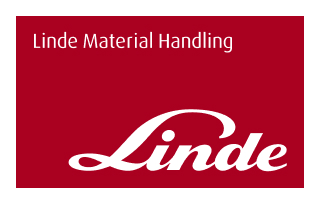- Blog
- Blog Article


In an era where sustainability is a business imperative, a regulatory requirement and a competitive differentiator, warehouses offer significant opportunities for reducing environmental impact. For leaders in logistics, manufacturing and distribution, a greener warehouse not only supports compliance and corporate social responsibility goals, but also reduces costs and enhances long-term resilience.
You don’t need to start with a greenfields development to create a sustainable warehouse. It’s possible to reduce the environmental impact of existing facilities with a few thoughtful upgrades that, together, make a measurable difference. From energy efficiency to space utilisation, here are practical steps that can help your business create a greener, more efficient warehouse.
Sustainability is not only about energy, it’s also about land use. Expanding warehouses outward consumes land that could be used for other purposes, including green space or community developments.
By adopting high-density storage systems such as very narrow aisle (VNA) racking, mobile racking, or automated storage and retrieval systems (AS/RS), businesses can dramatically increase storage capacity within the same — or even a smaller — footprint.
Given Australia’s sunny climate, it makes sense to take advantage of the large roof areas associated with warehouses. These are perfect for solar panel installations, which can supply a significant portion of the facility’s electricity needs, supporting both operations and equipment charging. Some operators are taking this further, integrating battery energy storage systems (BESS) to capture excess solar energy for use at peak times or during outages.
Water efficiency is often overlooked in warehouse design, yet it’s an area with significant potential to reduce environmental impact. Large warehouse roofs provide a perfect surface for rainwater collection, and by installing storage tanks, that water can be used for non-potable applications such as toilet flushing, irrigation of landscaping, or even wash-down operations.
This not only reduces reliance on mains water but also helps minimise stormwater run-off, which can otherwise overload local drainage systems. Developments like Goodman’s Eumemmerring Business Park and the Electrolux Port of Brisbane distribution centre have integrated significant rainwater harvesting systems into their designs, cutting potable water use while boosting resilience during drought periods.
Traditional industrial lamps consume large amounts of electricity and generate excess heat. By contrast, LED lighting systems use up to 70% less energy and can last more than twice as long.
Pairing LEDs with smart controls such as occupancy sensors, daylight harvesting, and zone-based dimming can reduce energy consumption even further. For example, areas with low traffic can remain dim until forklifts or workers are present. Similarly, skylights combined with daylight sensors can ensure artificial lighting is only used when needed.
For a warehouse operating 24/7, these upgrades can deliver a rapid return on investment while substantially cutting carbon emissions.
Heating, ventilation, and cooling can account for a major share of warehouse energy use. Improving insulation, air sealing, and roof reflectivity can dramatically reduce heating and cooling needs.
Smart climate control systems, which adjust airflow and temperature by zone and activity levels, ensure energy is not wasted on air conditioning unoccupied or low-use areas.
Adding green building features, such as energy-efficient windows and thermal barriers, pays dividends over the life of the facility.
Materials handling fleets, from forklifts to pallet movers, are central to warehouse operations. Shifting from diesel or LPG trucks to electric-powered equipment is a key sustainability move. Today’s electric forklifts match or exceed the performance of their internal combustion counterparts, and with the right charging infrastructure, they integrate seamlessly into demanding environments.
Investing in lithium-ION battery technology further boosts sustainability. Compared to lead-acid, lithium-ION offers faster charging, longer life cycles, and higher efficiency. This translates into fewer batteries used, less downtime, and lower overall operating costs.
Technology and infrastructure upgrades are essential, but people bring sustainability to life. Building a culture of environmental responsibility in the warehouse ensures that investments in green infrastructure deliver their full potential.
This cultural shift requires employee engagement, encouraging energy-saving behaviour, such as shutting down idle equipment or reporting air leaks, and training on eco-friendly operating practices for forklift drivers and warehouse staff.
And, of course, you can’t manage what you don’t measure, so it’s important to adopt visible sustainability metrics, such as dashboards displaying real-time energy use, recycling rates, or solar generation. When employees see the results of their actions, they are more motivated to participate.
Digital warehouse management systems (WMS) and energy management software also yield data that can be used to monitor sustainability, and these should be integrated into management reporting to provide visibility and enable continuous improvement.
And finally, regular audits ensure that upgrades deliver on their promises and identify new opportunities as technologies evolve.
A number of recent warehouse projects have been recognised for their sustainable designs:
Building a greener warehouse is more than a compliance exercise, it’s a strategic opportunity.
By adopting practical upgrades like LED lighting, solar charging, high-density storage and an eco-conscious culture, companies can lower costs, strengthen their environmental credentials, and future-proof their operations.
When it comes to logistics and materials handling, sustainability is not just about doing the right thing. It’s about leading the way by delivering efficiency, resilience, and long-term value to both the business and the planet.
Keep up to date with the latest in material handling reliability, safety and innovation by visiting our Content Hub and subscribing to our quarterly newsletter. And for the latest news and updates on all things Linde, follow us on LinkedIn.
VISIT CONTENT HUB